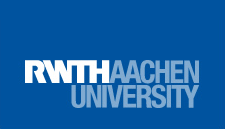Schlagwort: ‘Simon Steentjes’
Back to the roots

Professor Simon Steentjes, a former student of RWTH Aachen University and the current holder of the Chair of Electrical Machines and Drives ©Christian Schneider
Professor Simon Steentjes returned to his academic roots in October 2024 to become holder of the Chair of Electrical Machines and Drives.
The 37-year-old professor’s passion for technology was cultivated during his childhood, and led him to RWTH Aachen University for the first time in 2006. Here, he successfully completed his studies in Electrical Engineering and Information Technology, subsequently earning his doctorate under the supervision of his predecessor, Professor Kay Hameyer.
„I learned from an early age to repair things instead of throwing them away. My father showed me everything as a child. We often tinkered until things worked again,” recalls Professor Steentjes.
It was these formative experiences that not only ignited his enthusiasm for technology, but also instilled in him a strong commitment to sustainability.
„I want to leave behind a world worth living in for my child and future generations; thus, I consider sustainable development within electric machines and drives absolutely essential,” states the electrical engineer.
Electrical machines are indispensable for numerous applications – from industrial facilities, mobility solutions, and household appliances to energy supply systems. As such, enhancing the efficiency of electric machines and drives represents a significant opportunity for reducing CO₂ emissions – a crucial step toward protecting our climate, according to Steentje. He emphasizes that ongoing research and innovation are essential to enhance power density, torque density, efficiency levels, and manufacturing techniques while maintaining resource efficiency when integrating new technologies. Steentjes believes that we also need to gain a deeper understanding of the materials and resources used to manufacture our electrical machines to optimize their sustainability and efficiency. The use and production of magnetic materials alone – integral components found within every electrical machine – offers vast potential for optimization that must first be thoroughly understood by researchers like himself.
„To date, little attention has been paid to the advances made by the various disciplines involved or to specific components. While manufacturing technology evolves rapidly, these advancements must also inform production methods and design choices surrounding electric machines to harness opportunities for improved efficiency fully,“ the engineer points out.
Simon Steentjes is a researcher through and through. He relishes engaging with fellow researchers on pressing questions while finding solutions collaboratively, often alongside students and doctoral candidates – a dynamic he finds immensely rewarding. For him, working with young minds means fostering fresh ideas that keep him on the cutting edge. He finds it wonderful to be back in teaching.
The electrical engineer returned to academia having worked in industry before. At Audi, he was actively involved in e-mobility from the very beginning. Later, at Hilti, he took on the role of head of electric motors and drive technology in 2022, leading the development of a new electric motor platform for power tools, from concept to mass production, among other initiatives. During this time, Professor Steentjes experienced how crucial practical feedback is for designing and developing electrical machines, particularly in addressing the needs and challenges inherent of series production.
During his time in industry, he supervised around 20 doctoral theses. Publishing scientific work remained a priority for him despite his time away from academia – a clear indication that he always intended to return. Steentjes considers himself lucky to have turned his hobby into a career. He believes it’s important to do what makes you happy. And it is this attitude that he passes on to his students:
„As a professor, you have a responsibility to equip the next generation with knowledge, to motivate and encourage them to trust in their own abilities.“
He has now found his way back to academia. His return means also a personal success: Returning to RWTH Aachen University was a very personal mission for him, which he worked towards with the help of his family. The support of his family is particularly important to the husband and father. And when he’s not researching new electrical machines or drives, he likes to work with his son on motorising Lego vehicles.



